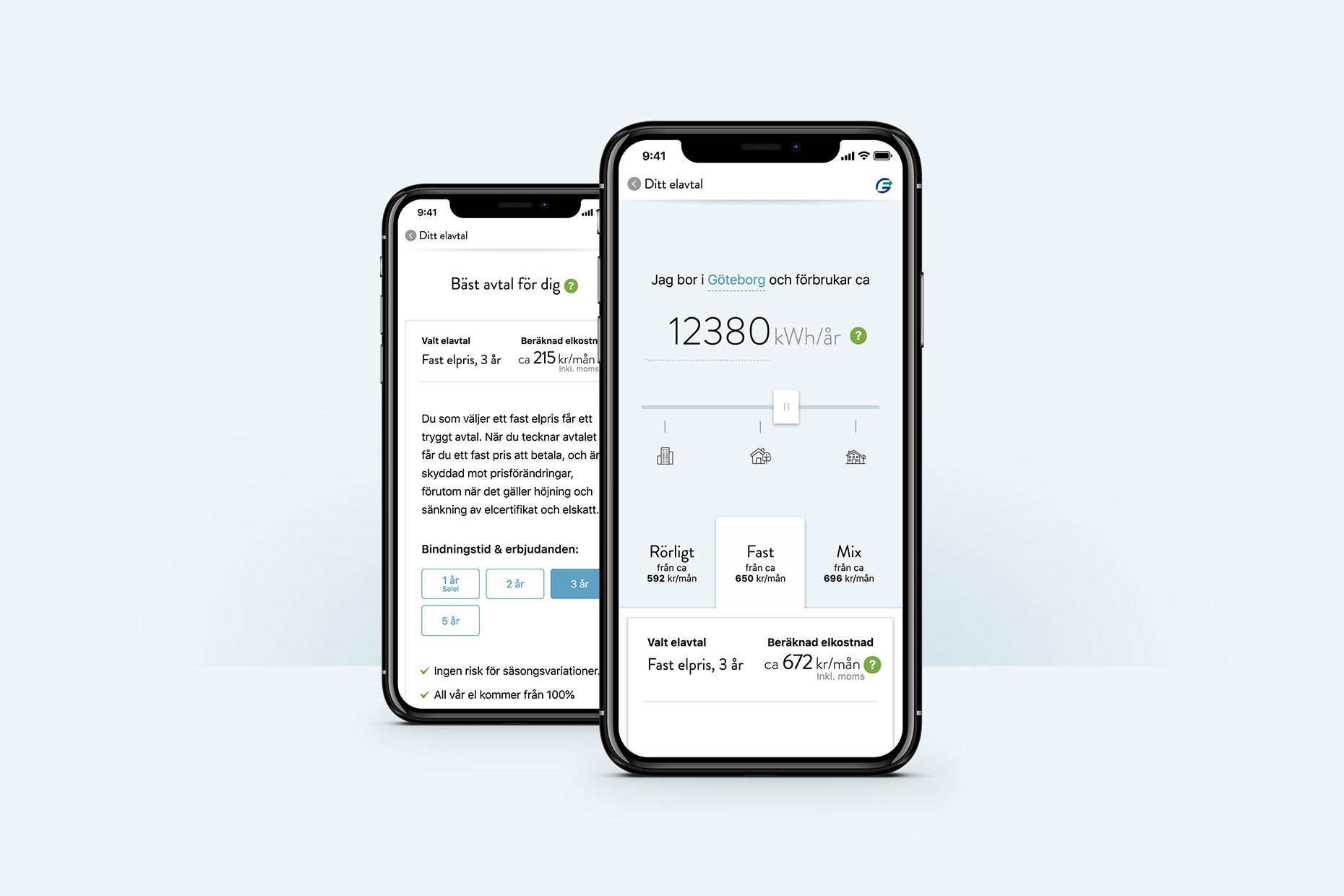Designing the future of sustainable mobility services
Have you ever designed something with the intention of it first being used 20 years from now? Neither had we – until Halmstad University came into our office
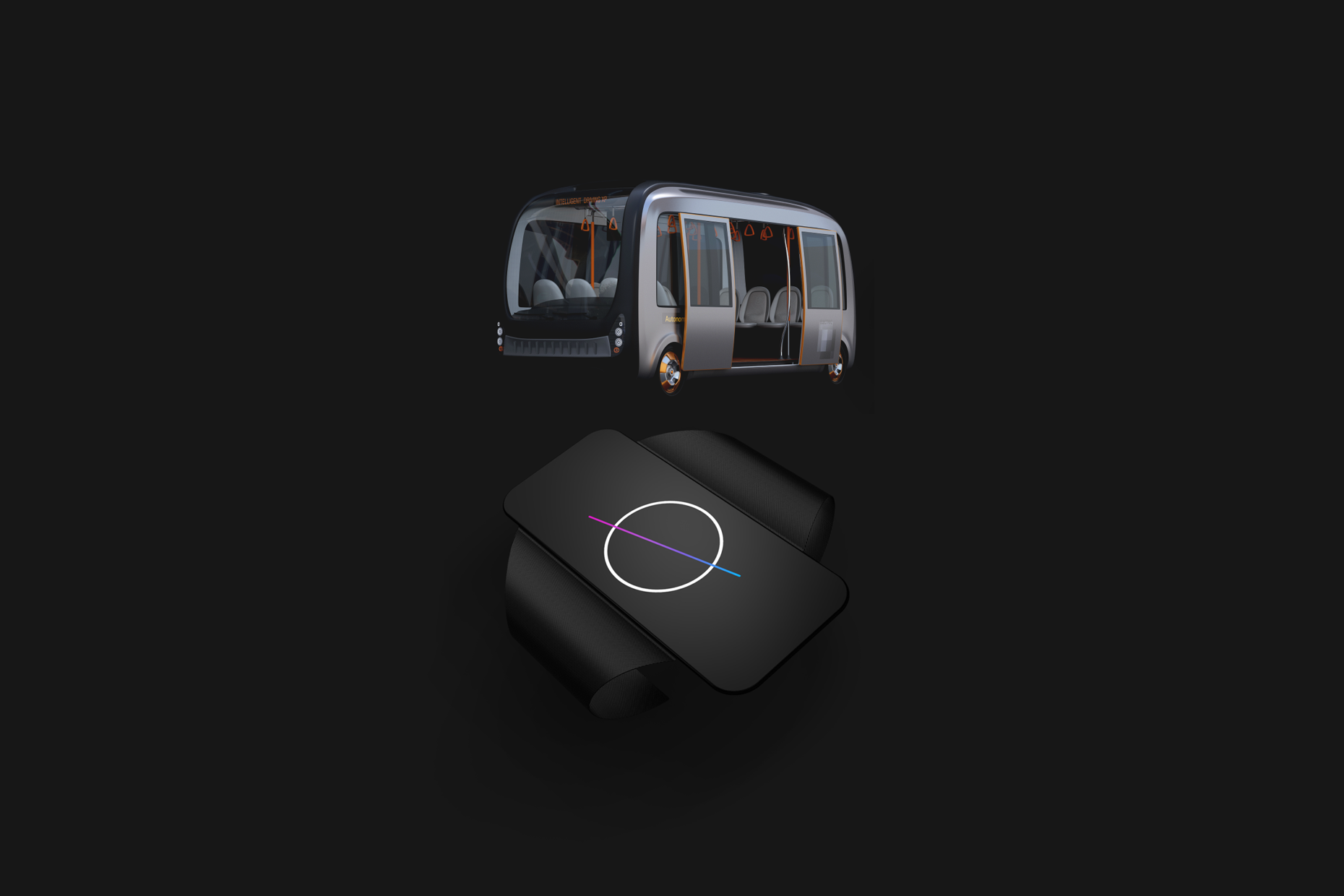
Halmstad University is running an interdisciplinary research project, on an open and sustainable mobility services, called OSMaaS. OSMaaS is a synergy project within the Halmstad University Knowledge and Competence Center.
The objective for this case was to construct a glimpse of what a future mobility experience could be like, in form of a prototype. So that insights from authentic use could produce new knowledge on how digital services and experiences can be designed. The focus for the prototype is on communicating ideas – not end-user evaluation or testing.
With a range of partners from both industry and the public sector, Halmstad University used design fiction and sci-fi prototyping grounded in interviews with mobility experts and literature reviews to sketch out a number of possible future scenarios.
Our future scenario plays out in Sharetopia, in the year of 2040.
Sharetopia – a different world
Year 2040
Due to ecological collapses and hard travel caps – authorities and the general population are faced with the risks of overshooting ecological footprints. The new currency Carbon Credit dictates what you can, and can not do.
Backlashes from ruthless surveillance activities from companies, and in some cases governments, have led to a strong focus on privacy regulations.
Legal hurdles have been adjusted to cater for circular economy. Work has been taxed less, materials more, making it easier and worthwhile to recycle.
Societal values have shifted around mobility and transportation of goods. Instead of going to stores, goods are getting transported to people’s homes.
Traveling is sometimes required for work, but is more often associated with a leisure time quality. Mobility services are based around automatic matching of travellers and goods with destinations.
In Sharetopia, economical balance instead of unchecked growth is in focus. The mobility service will help build these values.
Our solution
AVA – the wearable device
Your personal compass that guides you through your daily life. AVA senses the situations that you’re in, learns your routines and gives you advice and encouragement. And above all, AVA makes sure that you keep your Carbon Credits in balance.
With high demands in security AVA carries no data, everything is in the cloud with secure identification of the wearer. Functions within the device are controllable with either voice or touch gestures and notifications are tactile or audible.
Design concept
AVA is an almost textile-thin device that shows what you need to know at the moment. The entire unit can be adjusted in color according to activity or to, for example, blend into your outfit. It is created from 100% recycled material that can be re-recycled. It can vary in size and the UI can also be pictogram-based.
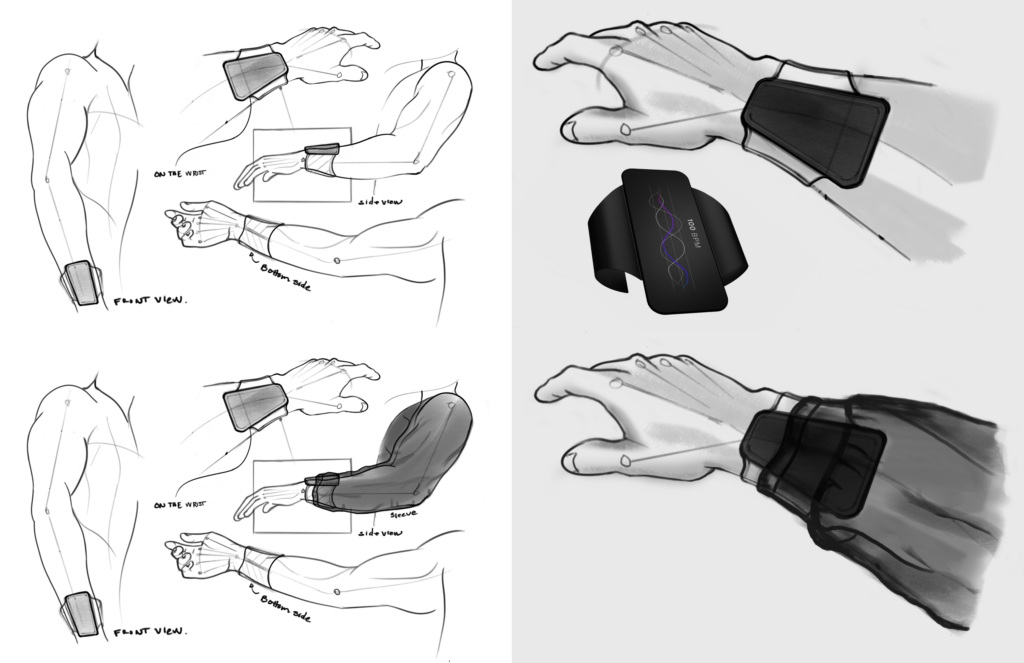
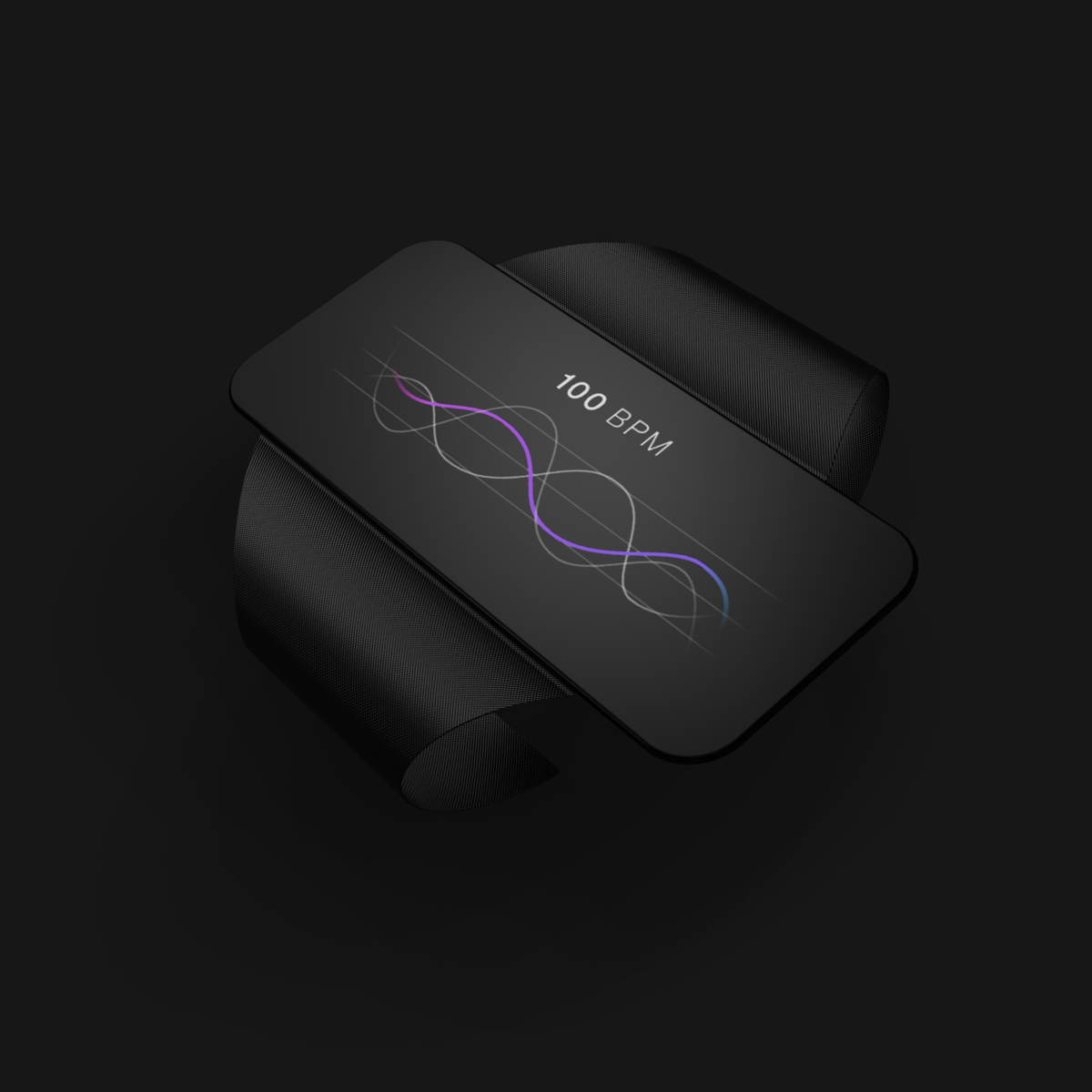
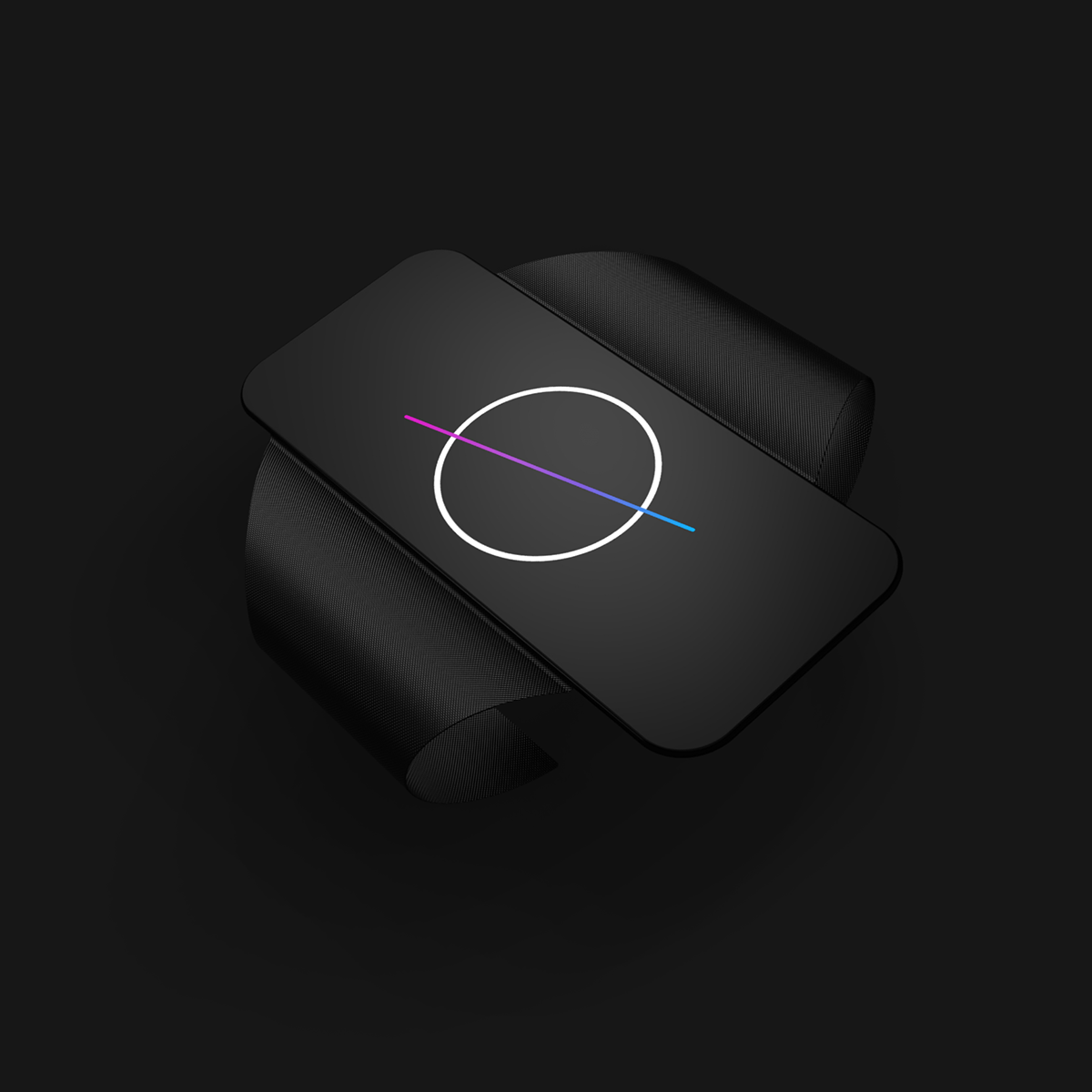
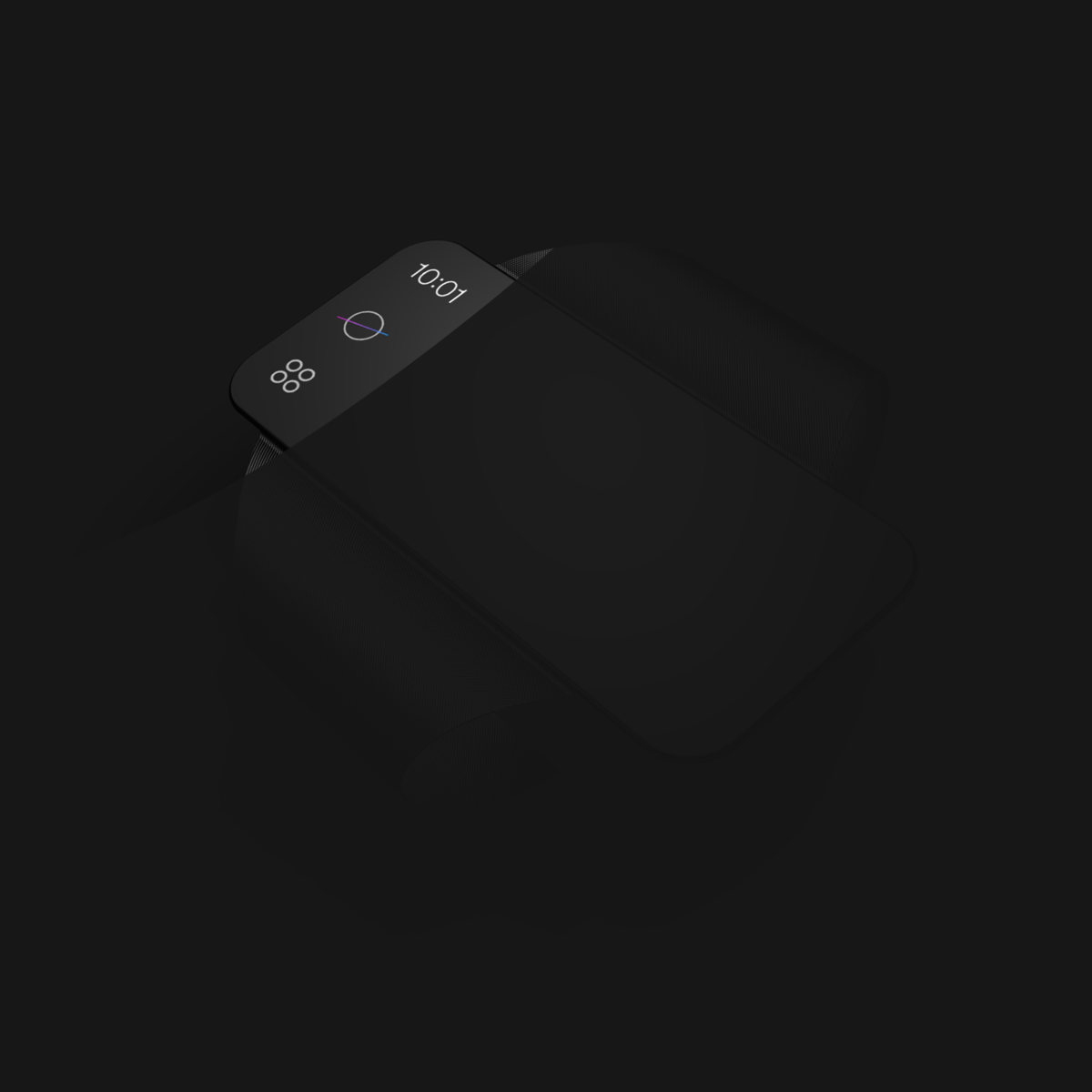
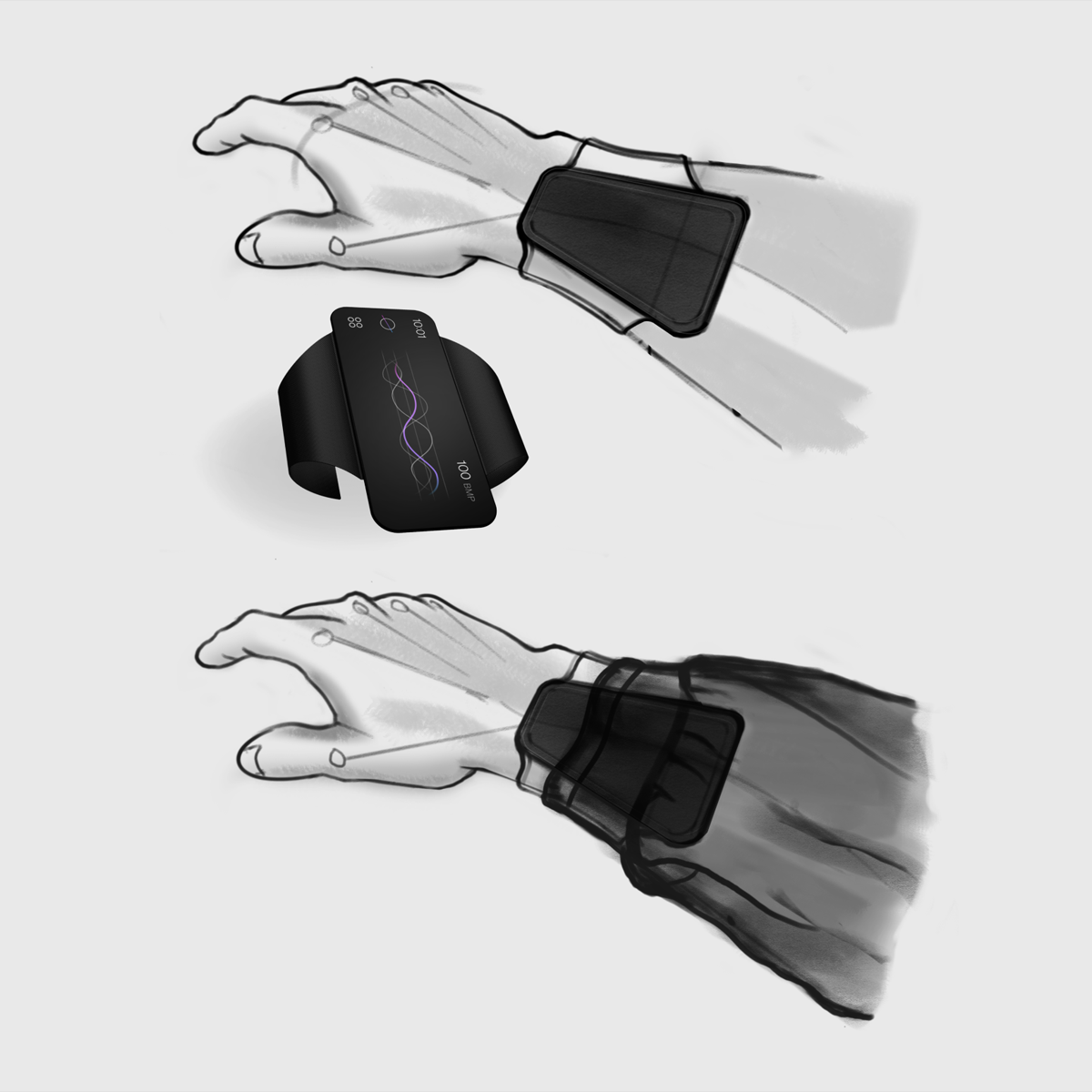
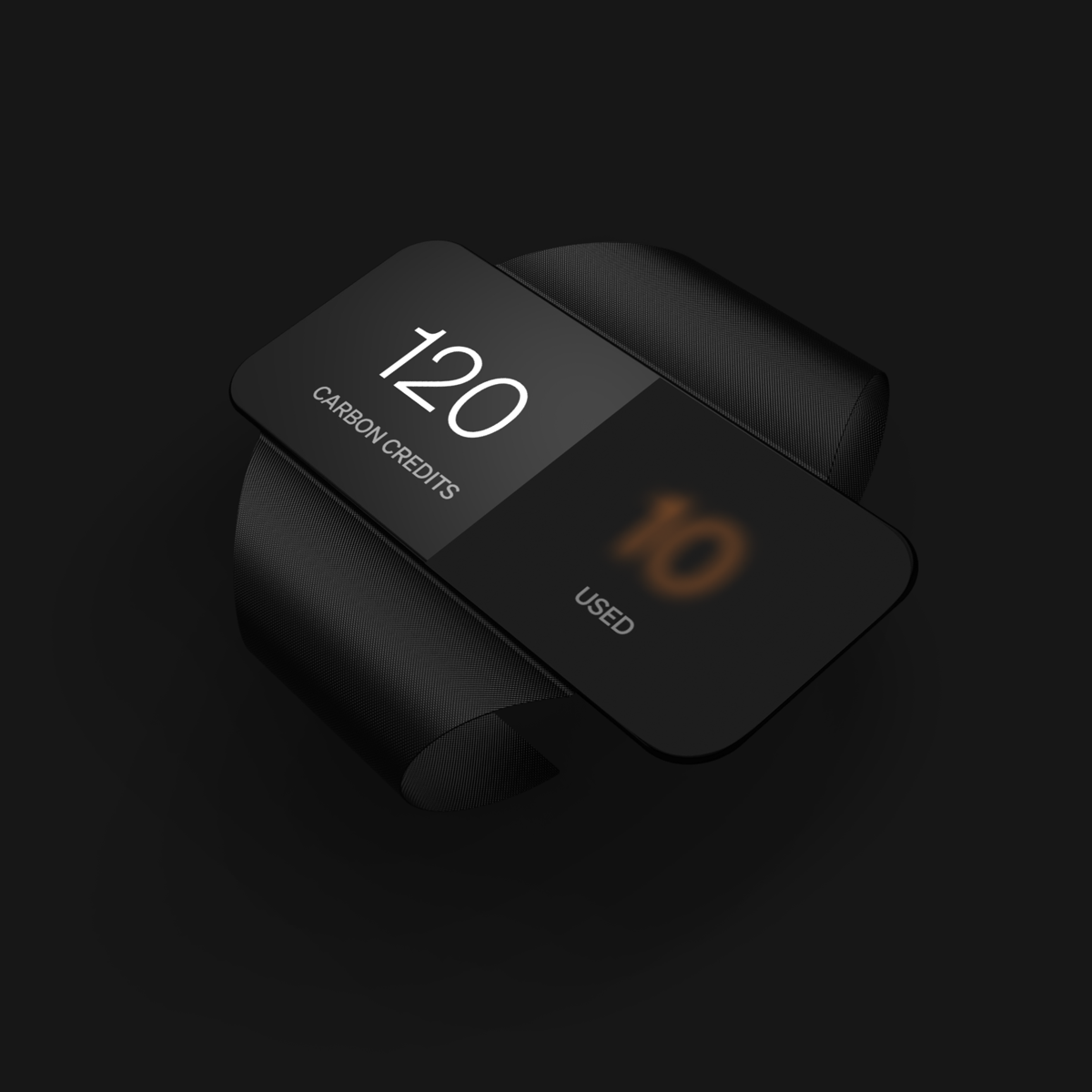
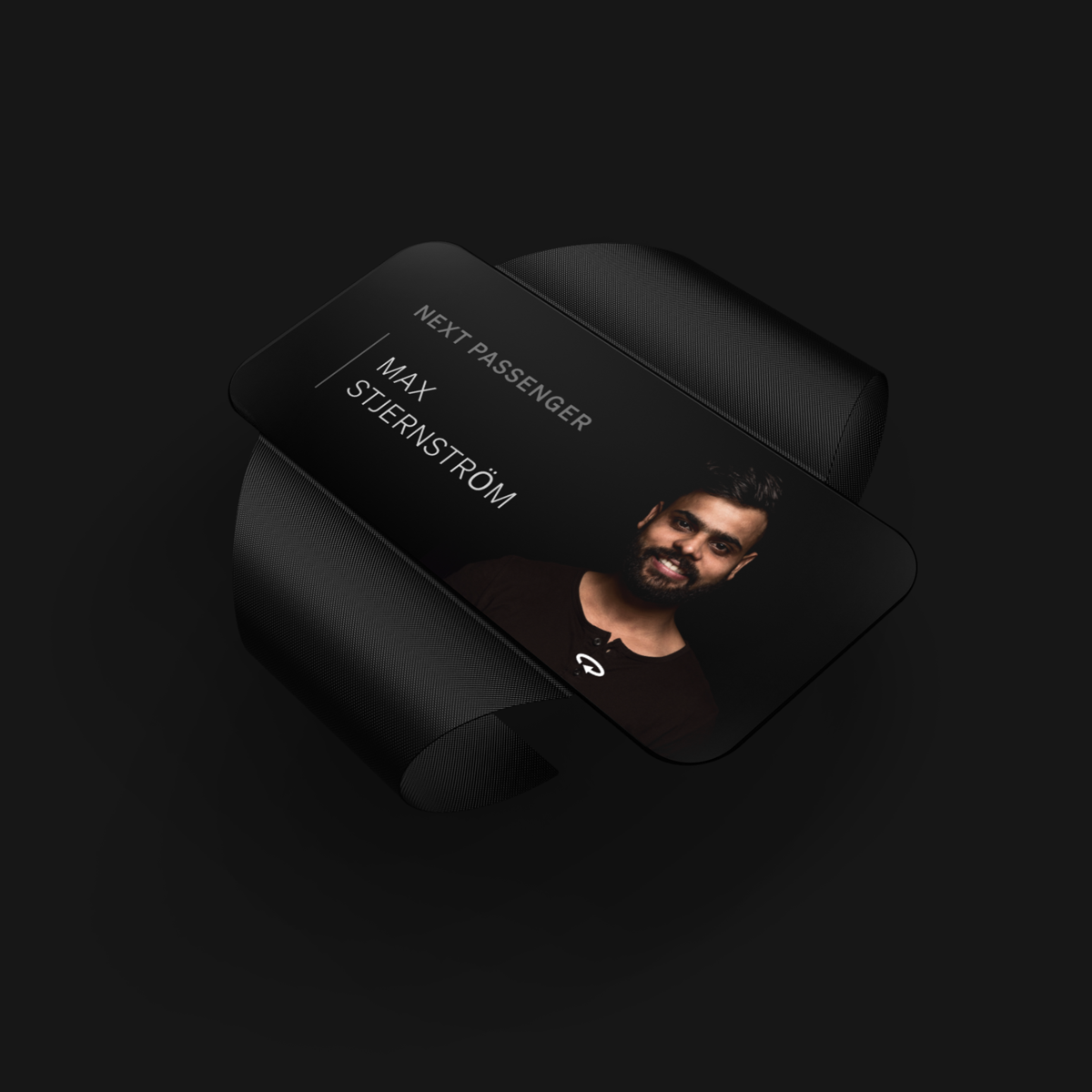
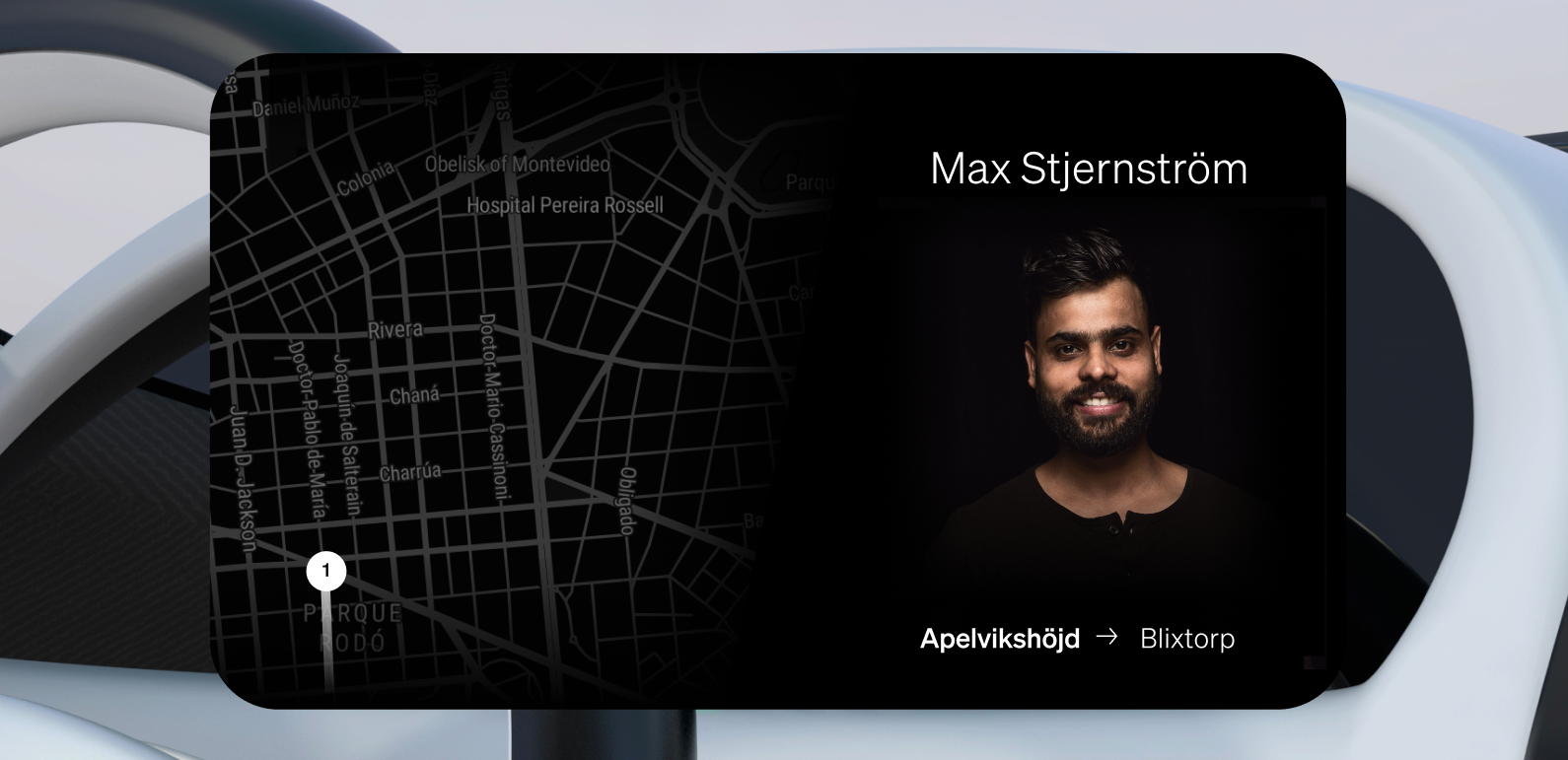
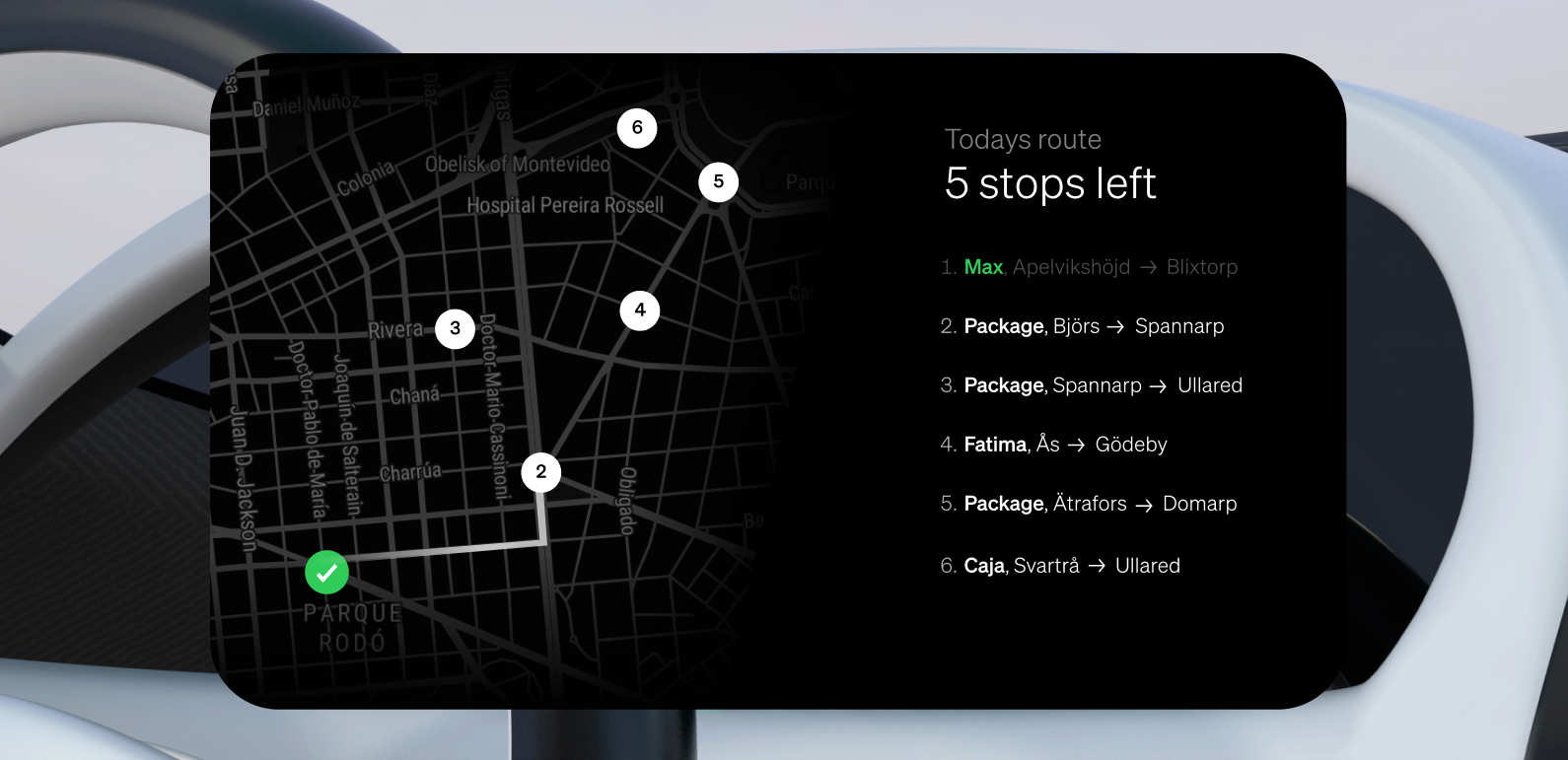
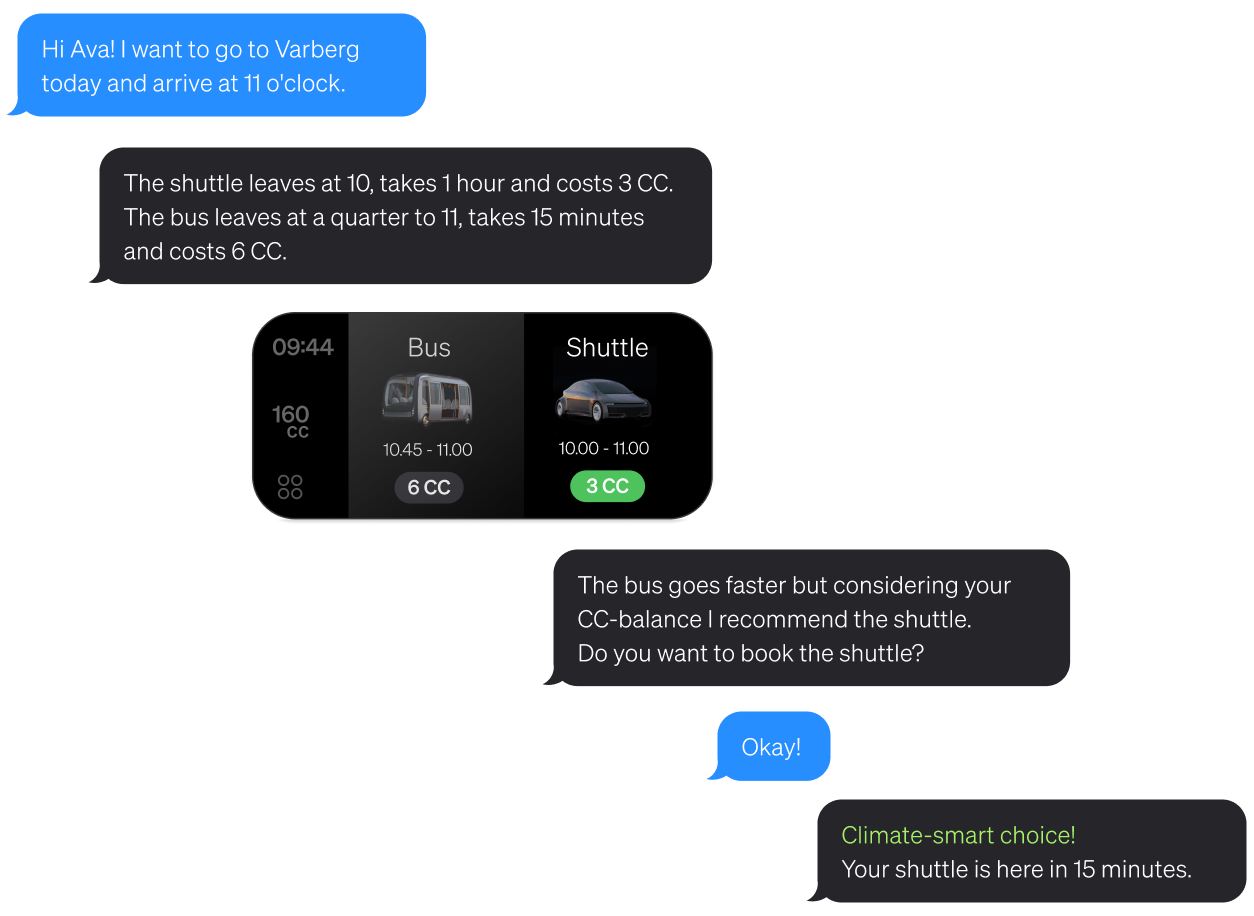
Prototype – Test phase
The prototype should communicate the experience and mechanics of:
- Using the service’s internal currency
- Volunteering personal time to assist public transportation
- On-the-fly sharing
And awaken questions like:
- What factors will affect empowerment, accessibility, integrity, and security?
- How is this service helping build resilience and democratic robustness?
- How is prediction based on AI technology and data changing the dynamics and experience of mobility services?
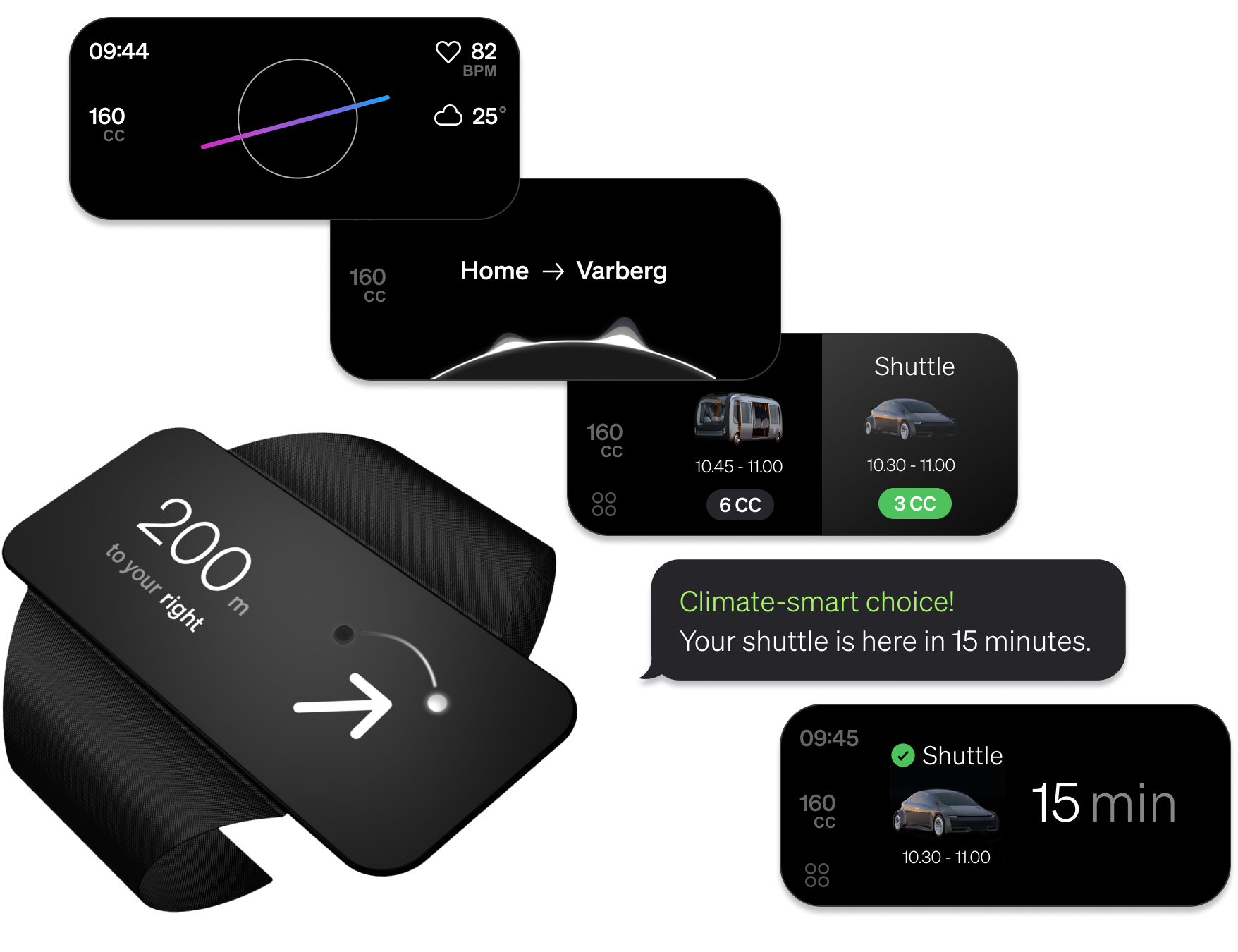
Scope
Service design and UXDesign concept
UX copy
Prototype


